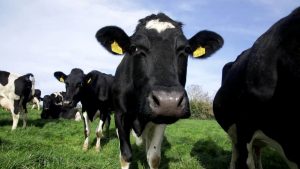
The growth in herd size has seen the need for many farms to hire staff, to ensure that their farms operates to its full potential.
However, attracting and keeping staff is an ongoing issues with the dairy and agricultural sector as a whole.
Keeping the farm system simple is going to help with attracting and keeping staff. It is vital that there is good communication between all staff on an ongoing basis.
Speaking at the Teagasc national dairy conference, John Whelan outlined his method of tracking freshly-calved cows.
Whelan uses seven different coloured bands to identify when cows have calved, and when they are due to enter the tank.
He and his farm staff use a WhatsApp group to track and monitor daily tasks on the farm.

These simple instructions could be used in many areas. On some farms, simple instructions like the one above are used to guide staff on how to operate the milking machine.
Standard operating procedures (SOPs) are a tool that can be used on farm to guide staff on how to complete tasks.
E.g., you could outline how to start, operate and then wash the milking machine – making it much easier for anyone coming in to milk for you, when you might not be there.






It can also be used for administering treatments and even feeding calves. This ensures that jobs can be easily completed, and in a way that you want them done.
Dairy farms
The technology now available to farmers can not be overlooked, such as registering calves on the phone, heat/health monitoring systems and automatic calf feeders.
There is a cost associated with them, but when looked at compared to the potential saving from less sick animals, and better fertility performance – the cost is minimal.
Some of the technology now available to farmers is grant-aided, so this cost can be reduced further in some situations.
Although there are many areas that could be looked, reducing the amount of time doing jobs such as heat detection, does make your farm a nicer place to work.

























